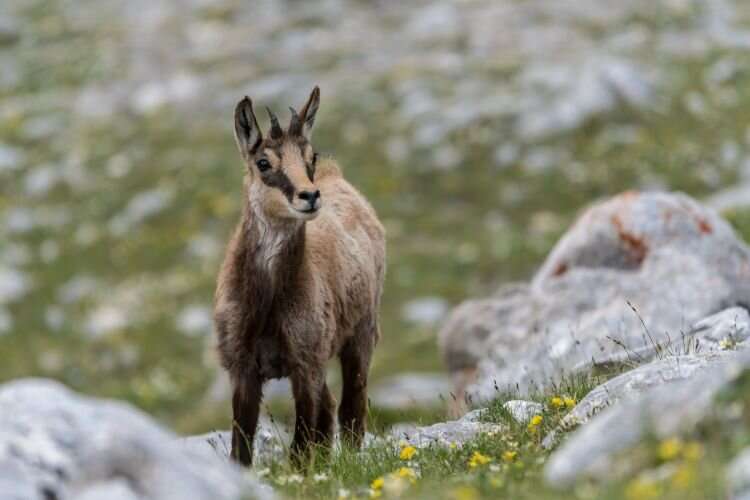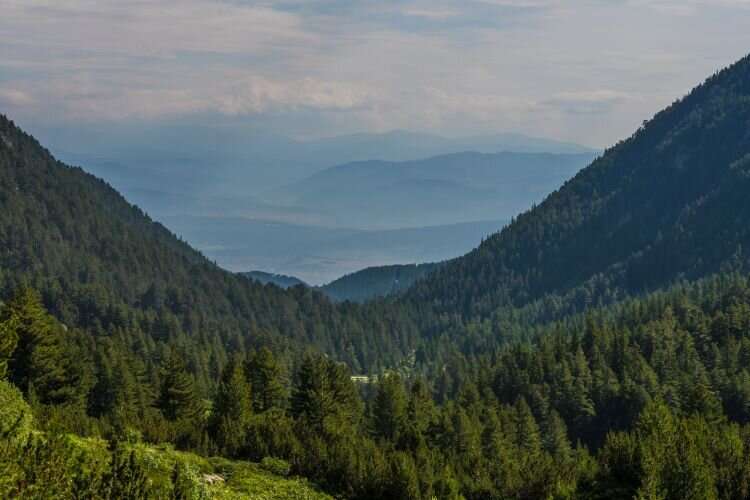Balkan chamois. Credit: Evgeni Dimitrov
WWF-Bulgaria is alarmed that the new draft management plan for Pirin National Park is further endangering the habitat of the chamois. The draft plan foresees an expansion of sport infrastructure that would be allowed on an area 12.5 times greater than what is currently allowed, or 7.5% of the Park territory. The plans involve construction mostly in the northern part of Pirin above the towns of Bansko and Dobrinishte, and in the Koulinoto area. The implications of this increased human interference in a protected nature area, and increased pressure on the endangered Balkan chamois habitat have not yet been assessed by the competent authority—the Ministry of Environment and Water. The Chamois play a crucial role in sustaining the fragile and vulnerable mountain ecosystems. Besides being an important part of the food chain, it is the only representative of the Pirin National Park fauna that can feed on shrubs as well as conifer tree branches, thus protecting the fast-disappearing high mountain pastures. According to the Red Data Book of Bulgaria, they have been classified as an endangered subspecies since 2011.
For this reason, WWF organized a field visit to the new suggested tourism zones. The last assessment of the conservation status of the Balkan chamois in Pirin in 2013 stated that the specie's status in the area was unfavorable—unsatisfactory. The population of the species is only 320-400 animals—well below the optimal numbers.
Chamois habitat
The Balkan chamois is found mainly in rocky areas among gorges, cliffs and steep slopes. It inhabits both the subalpine and alpine zones, as well as the higher altitude parts of the forest where there are suitable rock formations. In karst regions such as along Pirin's northern slopes, and in areas with open spaces, there is greater chamois population density. Nowadays, unfortunately, the chamois in Bulgaria has been pushed into the most remote areas.
Threats to the chamois
The most significant threat to the chamois in Bulgaria is poaching. Even though there are indications that the practice is in decline in certain areas, illegal hunting is still a strong factor impeding the achievement of optimal population density for the species. Another serious threat is disturbance.
Pirin National Park. Credit: Evgeni Dimitrov
There are signals for unregulated use of snowmobiles the park territory, in winter chamois habitats. Moreover, massive gatherings of people next to ski facilities make the chamois abandon or avoid their winter habitats. Running in the deep snow to avoid people and snowmobiles at a time when their energy is already low requires them to draw on their reserves and can lead to exhaustion, weakening of the immune system, illness and even death. Chamois need much more energy in the winter in order to sustain their body temperature and to move through the snow. At the same time, the available food in winter is low-calorie and difficult to digest. Therefore, they may exhaust more energy than they are able to obtain. Their winter habitats are crucial to sustain the optimal numbers and maintain genetic variety for the species.
Part of the newly planned tourism zone runs straight along the border of Bayuvi dupki—Dzhindzhiritsa, one of the oldest nature reserves in Bulgaria. Besides the massive gathering of people, this will lead to the temptation of unregulated off-piste skiing inside the reserve, different from winter ski touring practiced by small groups of people in various places in the Park.
WWF's inspection found less chamois around Todorka Peak where off-piste skiing is gaining popularity, in comparison with other areas with similar characteristics. Disturbance, however, is only one element of the bigger problem with the construction of the new ski trails and lifts. Plans would require clear-cutting of old growth forest and direct destruction of the chamois' habitat. Furthermore, in order for the chamois status to improve, WWF-Bulgaria recommends:
- preventing the expansion of the ski runs and facilities in the species' habitat;
- placing information signs in the area;
- restricting access to livestock, and ensuring the permanent presence of shepherds and dogs in key habitats, especially above 2500 meters above sea level;
- deepening the fight against poaching;
- carrying out mandatory checks of tourist lodges in the vicinity of the animals habitat to prevent poaching; and
- people should tell the Park Directorate that they do not support unregulated driving of snowmobiles in the Park.
WWF-Bulgaria is keeping up the fight to prohibit new logging and construction in Pirin National Park which would endanger the chamois and many other species that depend on the old growth forests. After nothing else proved effective, in March 2017 WWF-Bulgaria and the Association of Parks in Bulgaria (APB) filed a lawsuit against the Ministry of Environment and Water's decision to not conduct a Strategic Environmental Assessment of the expansion plan. Since then, WWF-Bulgaria and APB have won a number of court rulings; however the final court decision still lies ahead.
Provided by WWF























